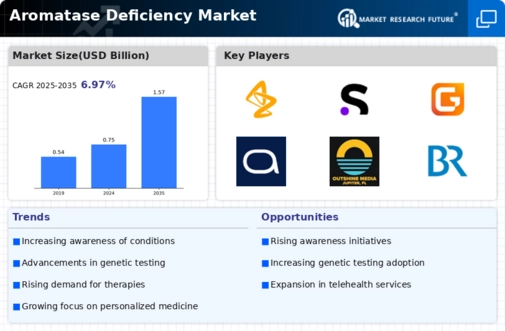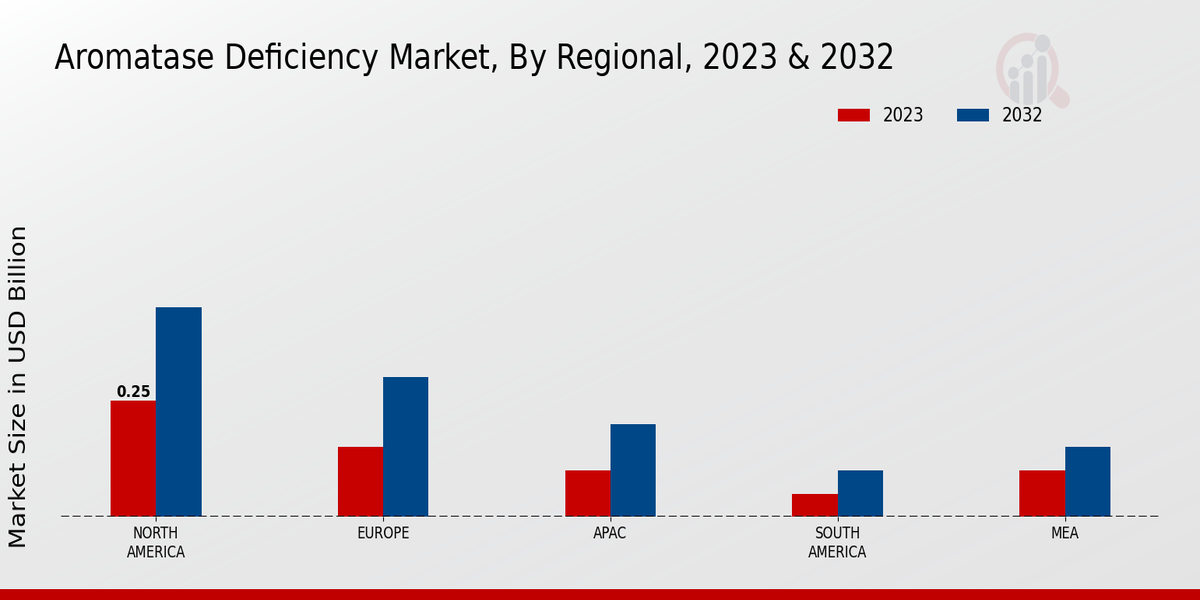Market Growth Projections
Advancements in Genetic Research
Recent advancements in genetic research have significantly impacted the Global Aromatase Deficiency Market Industry. The identification of specific genetic markers associated with aromatase deficiency allows for more precise diagnosis and personalized treatment options. This progress not only enhances patient outcomes but also encourages pharmaceutical companies to invest in research and development of targeted therapies. As genetic testing becomes more accessible and affordable, the market is poised for growth. The potential for innovative treatments based on genetic insights may attract a broader patient population, further driving market expansion in the coming years.
Growing Demand for Hormonal Therapies
The increasing demand for hormonal therapies is a crucial factor influencing the Global Aromatase Deficiency Market Industry. Patients diagnosed with aromatase deficiency often require hormone replacement therapies to manage their symptoms effectively. The rise in the prevalence of conditions related to hormonal imbalances, such as infertility and osteoporosis, contributes to this demand. Pharmaceutical companies are responding by developing new formulations and delivery methods for hormonal treatments. As the market evolves, the introduction of more effective and patient-friendly therapies is likely to enhance treatment adherence and improve patient quality of life, thereby driving market growth.
Increasing Awareness of Hormonal Disorders
The rising awareness of hormonal disorders, particularly aromatase deficiency, is a pivotal driver for the Global Aromatase Deficiency Market Industry. As healthcare professionals and patients become more informed about the implications of hormonal imbalances, the demand for diagnostic and therapeutic solutions is likely to increase. Educational campaigns and initiatives by health organizations contribute to this awareness, potentially leading to earlier diagnosis and treatment. This heightened awareness is expected to drive the market value from 0.75 USD Billion in 2024 to an estimated 1.57 USD Billion by 2035, reflecting a compound annual growth rate of 6.96% for the period from 2025 to 2035.
Regulatory Support for Rare Disease Treatments
Regulatory support for treatments targeting rare diseases, including aromatase deficiency, plays a significant role in shaping the Global Aromatase Deficiency Market Industry. Governments and regulatory bodies are increasingly recognizing the need for expedited approval processes and incentives for companies developing therapies for rare conditions. This support can lead to a more favorable environment for innovation and investment in the market. As a result, pharmaceutical companies may be more inclined to pursue research and development initiatives aimed at addressing aromatase deficiency, potentially leading to a wider array of treatment options for patients.
Emerging Markets and Healthcare Infrastructure Development
The expansion of healthcare infrastructure in emerging markets is a notable driver for the Global Aromatase Deficiency Market Industry. As countries develop their healthcare systems, access to diagnostic and therapeutic services for hormonal disorders improves. This trend is particularly evident in regions where healthcare investments are increasing, leading to better patient outcomes and higher demand for specialized treatments. The growth of the middle class in these regions may also contribute to increased healthcare spending, further propelling market growth. As healthcare systems evolve, the market for aromatase deficiency treatments is likely to expand, providing opportunities for stakeholders.















